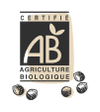What is BRF?
BRF stands for "ramial fragmented wood." This still-new method, which appeared in Quebec in the 1970s, offers a quiet green revolution. A real one this time. An accidental discoveryA discovery... It was under the impetus of a politician, Edgar Guay, Assistant Deputy Minister at the Quebec Ministry of Lands and Forests, that experiments with BRF became widespread. Like any discovery, the idea for BRF was born of chance and a spirit of observation. It was while visiting a pine oil distillery and when the owner pointed out enormous strawberry plants growing spontaneously on his pile of wood chip waste that Edgar Guay wanted to understand the still-unknown process by which simple strawberry plants on such an unusual substrate could reach such proportions! A few motivated farmers, agronomists, and institutions then "followed" on. In the 1980s, the first reports were published with impressive results: increased resistance to frost and disease, and soil structure with a tremendous contribution of humus. Experiments multiplied. A patent was quickly filed: sylvagrary. ... which took a long time to reach us. Despite these excellent results, BRF remained confined to its overseas borders and the practice remained rare. It was not until 2004 that things changed under the leadership of a Belgian agricultural engineer, Benoît Noël, and a French farmer, Jacky Dupéty. The two men successfully experimented with the use of BRF on difficult lands and played a major role in its dissemination. It took a few decades... What is BRF? Definition Here is the definition from Eléa Asselineau and Gilles Domenech, among the first in France to be interested in this subject: "BRFs are the result of fresh grinding (or shavings) of twigs and small green branches with a diameter of less than 7cm, with or without leaves. The branches come from deciduous tree species (Angio-sperms dicots). It is however possible to use a little conifer (Gymnosperms) in a mixture, up to 20%. This grinding is intended to be applied to the soil." Neither compost ... BRF is therefore clearly distinguished from compost which results from fermentation after heating of various putrescible materials: green waste, manure, sewage sludge, food industry waste, carcasses, etc. Their impact on the soil is therefore completely different: composts are largely mineralized and, while they have a positive influence on bacterial life in the soil, their action is more sensitive on plant nutrition. BRF is a fresh material, similar to still-living wood. Its action on the soil accelerates the stimulation of its life, as in forest soils. This is why it should be considered an "aggradant" (capable of acting against degradation) rather than an amendment, stimulating the cryptogamic life of the soil and promoting pedogenesis. ... nor mulch Similarly, BRF is often confused with mulch or mulch: this term covers any ground cover essentially intended to protect the soil, regulate its temperature, slow water evaporation, limit weeds and slow down beating. Many different materials can be used for this purpose: grass clippings, straw, cardboard, wool, dead leaves, plastic, etc. In the long run, natural mulches of course have a positive effect on soil life, but the process differs markedly from BRF. Explanation To briefly summarize what is described much more precisely in Jacky Dupéty's book, the principle of BRF is based on the observation that "the keystone of pedogenesis (therefore in forests) is lignin (polyphenols) and the fungi capable of transforming it." However, there is almost no lignin production in vegetable gardens! Young, fresh branches, particularly when the sap is falling in autumn or early winter, are very rich in lignin. It then becomes tempting to grind them to incorporate them into the soil and thus restart the long and complex cycle of soil reformation. This shredded material is the first link in a chain: the fungi find a food source in the lignin before their mycelia themselves become that of small animals which, in turn, etc. It is this revived cryptogamic life that makes BRF a completely new method. We will explain to you how to make BRF for your garden. When to cut wood to make BRF? It is between October and February, during the dormant period of hardwood trees, that the harvest is the best. At this time of year, the buds are already formed, but protected by their scales, they are dormant. There is then no transfer of energy between the tree and its future foliage. It is enough to prune these inexhaustible suppliers of plant matter, sometimes even a little "brutally" from the moment the cuts are clean. Intervening at this time of year also allows you to store branches and twigs without fear of drying out caused by UV rays. This possibility of storing and storing "peacefully" above all allows you to take the time to do a good job. In addition, in winter, most hardwood trees have lost their leaves, except for a few species. The most well-known example is of course the oak, but others like the hornbeam also have this particularity. Ideally, only leafless branches should be shredded... Moreover, from a practical point of view, winter remains the best season to work on trees, even when it comes to fairly light cuts.





